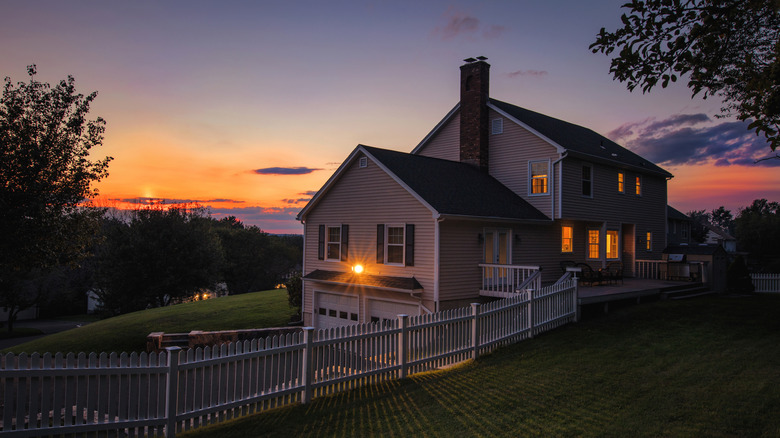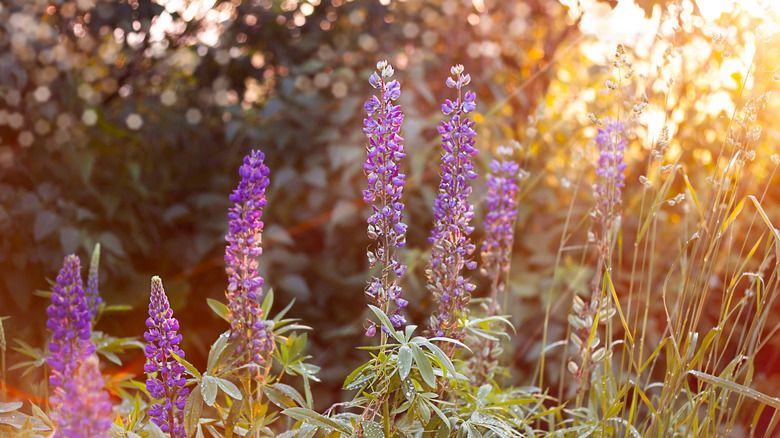When Is The Last 6pm Sunset In Your Area For 2025? (& Why It Matters For Your Garden)
It's not just us humans who are about to crave a long winter's nap as sunsets start to occur earlier in the evening or afternoon. Plants' priorities shift from vigorous growth to conserving energy as darkness comes earlier. The last 6 p.m. sunsets, which occur at different times based on your latitude and longitude across the United States, are a visible cue of this change. Toward the end of October in many parts of the country, the sun will start setting before 6 p.m., and with less sunlight, it will be time to bust out your fall garden to-do list.
Earlier sunsets mark the start of the cool-weather season, when less warming light is available to plants. This is when gardeners prepare for winter by mulching, cutting back or dividing perennial plants, and cleaning up any foliage that's diseased or can harbor pests. Most likely, your garden won't need to be watered as frequently without as much of the sun's soil-drying action. Instead, you may want to nourish your garden by planting cover crops in the fall, which is better for the soil than leaving it bare.
Even though there are trends in weather associated with earlier sunsets, you'll still need to monitor local conditions, as exceptions do happen. In California, for example, the Santa Ana winds can bring dry conditions that can create a need for increased watering. Also, the seasonal shift in some parts of the country won't mean you need to stop growing crops, but you can pivot to growing different ones, and a soil test may be in order to see what nutrients the next wave of plants will need.
The last 6 p.m. sunset varies by region
The sun is already setting at or before 6 p.m. in Chicago, Illinois; Phoenix, Arizona; and Honolulu, Hawaii, and other cities are bracing for earlier darkness in the coming weeks. The last day in 2025 the sun will set at or after 6 p.m. is October 25 in New York City, followed by October 26 in Seattle, Washington, and October 31 in Los Angeles, California, and Anchorage, Alaska.
Early November will usher in a drastic time swing since daylight saving time ends for the year on November 2, pushing up sunset times an hour. The sun stops setting after 6 p.m. on November 2 in Minneapolis, Minnesota, and Atlanta, Georgia. You can check sunset times based on your city at Almanac.com.
Just as the beginning of daylight saving time affected your gardening schedule, its end will also require adjustments. You'll gain more light in the morning and lose it later in the day, which gives you the opportunity to water garden plants earlier. And watering your plants early in the morning is ideal, giving them enough time to dry and cutting the risk of a plant fungus developing.
An earlier sunset has benefits and drawbacks for your garden
The earlier sunsets not only shake up your watering schedule but also affect which plants grow well in the garden. Flowering plants and vegetables vary in the amount of continuous light they need, so long-day plants like coneflowers (Echinacea purpurea) and potatoes (Solanum tuberosum) will come to the end of their growing season since there is less daily light available. Herbs are another example of plants that may not survive in low light outdoors in a cold climate; it's often best to bring them inside for the winter.
It's natural to see existing plants shriveling up, which along with the first frost of the year is a sign to start your garden cleanup. Compost the healthy plant waste, but make sure to discard anything that looks diseased. Other winter prep tasks include cutting perennial plants back and trimming the evergreen shrubs that will provide your winter garden with character.
On the upside, there are short-day plants, which actually require less than 12 hours of sunlight to bloom. For poinsettia (Euphorbia pulcherrima) and Christmas cactus (Schlumbergera), earlier darkness signals their time to shine. If you want to use the time to plant, try burying bulbs that will germinate over the winter and grow in the springtime. You'll want to get these bulbs in the ground by early November. Also, depending on your garden's USDA Hardiness Zone, there are cool-season vegetables you can grow for a winter harvest.


